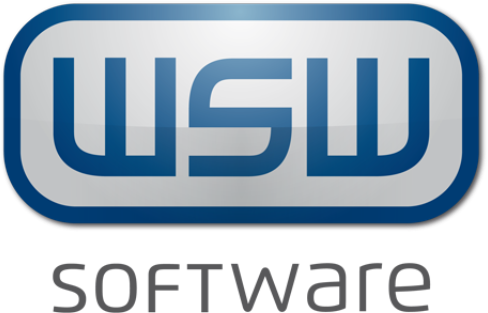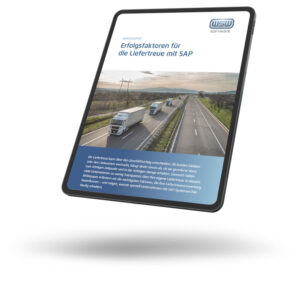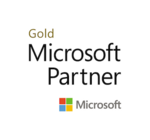With the IT procedure ATLAS, the German customs administration is digitizing and automating its processes. Formerly paper-based documents such as export declarations are thus replaced by electronic messages. Implemented correctly, digitized customs processes bring with them a significant acceleration and simplification of customs processing for companies.
What does ATLAS stand for?
ATLAS is the abbreviation for Automated Tariff and Local Customs Clearance System. It is an IT system of the German customs administration with which the authority replaces written customs declarations and administrative acts with messages in electronic format (XML, formerly EDIFACT). The aim of the software is to simplify and speed up communication with the customs administration for companies as well as for the authority itself.
ATLAS and its sub-procedures are provided by the Federal Ministry of Finance. With the help of the system, all declaration data of economic operators is stored centrally. This data can then be retrieved and processed by the individual offices of the customs administration. These include main customs offices, customs offices and customs investigation offices. In addition, ATLAS transmits the data required for customs clearance to the other EU member states as needed.
What is the ATLAS procedure?
The "ATLAS" procedure is an IT process that ensures largely automated clearance and digital monitoring of cross-border goods traffic. Several parts of the procedure are supported. The most important are the following:
- ATLAS import
- ATLAS Export
- ATLAS Shipping (NCTS)
- ATLAS EAS (entry and exit summary declarations)
But on closer inspection, what processes and regulations do these components denote and involve?
ATLAS import
ATLAS Import is aimed at companies that import goods from third countries into the European Union. This is because these goods require an import declaration in order to place them in one of the following customs procedures:
- Procedure of release for free circulation for customs and tax purposes
- Customs warehousing procedure
- Inward processing method
ATLAS Export
The Union Customs Code (UCC) obliges all companies in the EU to participate in the Automated Export System (AES) and to report export transactions electronically. In Germany, this is done in the national IT procedure ATLAS. This applies regardless of the transport route and to all export transactions. The (statistical) value of the goods essentially determines which electronic procedure is to be selected:
- Value from 3,001 euros: A two-stage normal procedure (rule case) is due.
- Value between 1,001 and 3,001 euros: Requires a simplified one-step procedure for small consignments.
- Value up to 1,000 euros and a total mass of no more than 1,000 kg: The exporting company decides for itself whether or not to make an electronic declaration.
In addition, ATLAS Export supports transfers to the export procedure in the normal procedure as well as simplified procedures. The transfer of goods to the outward processing procedure is mapped in the same way.
ATLAS Shipping (NCTS)
NCTS stands for New Computerized Transit System and enables the movement of goods not in free circulation (e.g. non-Union goods on import or re-export) and transit through participating countries. This is a platform in which over 30 countries participate. The system is responsible for placing goods under the transit procedure and for its termination and discharge.
ATLAS EAS
EAS (Entry and Exit Summary Declarations)
The Union Customs Code states that entry and exit summary declarations must be submitted electronically to the customs authorities for goods to be imported and exported. This obligation can be fulfilled with ATLAS EAS. These declarations are used for IT-supported risk analyses before goods enter or leave the customs territory of the EU.
How do declarations in the ATLAS export procedure work?
In order to submit an export declaration to customs using ATLAS, several requirements must be met. First, companies need a so-called EORI number (Economic Operators' Registration and Identification Number). This enables the unique identification of economic operators in the European Union. The number can be obtained free of charge from the General Directorate of Customs. A BIN, the trader identification number, is also required.
Now the ATLAS software comes into play. If they have not already done so, companies must register to use the system. Once registration is complete, the export declaration is available for use via ATLAS. There are then two options for electronic export declaration: The web-based declaration via the so-called Internet Export Declaration Plus (IAA) of the German customs administration or the use of a tested and certified participant software, which supports the export process and transfers the data via interface to the ATLAS system. Incidentally, such a software solution can also be fully integrated into an SAP system or other ERP system as an add-on.
After the electronic customs declaration, the next steps from an organizational point of view are as follows (normal procedure):
- Submission of an export declaration via ATLAS (usually 24 hours before the actual shipment of goods)
- Examination of the admissibility of the export declaration and automated risk analysis by the customs administration
- Obtaining a work number via ATLAS
- Presentation of goods at the inland customs office
- Examination of the export process by the inland customs office and release of the goods for export
- Receipt of the Export Accompanying Document (ABD) including Movement Reference Number (MRN) and barcode via ATLAS
- Shipment of the goods accompanied by a copy of ABD
- Presentation of the goods at the customs office of exit (EU external border, seaport, airport) and presentation of the ABD copy
- Termination of the export procedure by the customs office of exit
- Confirmation of the export of goods (for VAT purposes, among others) via ATLAS (exit note)
What are the options for participating in ATLAS?
In order to be able to report exports via ATLAS, the aforementioned organizational and technical requirements must be met. There are several options for participating in the ATLAS procedure:
Internet export declaration Plus (IAA-Plus)
IAA-Plus is the online platform of the customs administration. Companies can enter data and documents there manually. However, this variant is time-consuming and error-prone. It is only recommended for companies and private users who very rarely export to third countries.
Stand-alone software
There are several stand-alone software solutions on the market that support communication with customs. The systems must be tested and certified by the customs administration. Software in this category is often difficult to integrate into an existing system landscape. In some cases, this requires the development of individual interfaces, for example to an ERP system.
SAP GTS (Global Trade Services)
SAP GTS is the SAP solution for managing all foreign trade processes. SAP Global Trade Services is very comprehensive and complex. This suits large companies with multi-layered customs processes. For medium-sized companies, on the other hand, the solution is often oversized.
Add-ons for the SAP system
For SAP systems such as SAP ERP and SAP S/4HANA, there are a number of add-on solutions that have been created specifically for the areas of foreign trade and/or customs. Tools of this type can be a good solution for mapping and automating processes accordingly. Unlike stand-alone systems, the plug-ins integrate seamlessly into the SAP system.
What are the advantages of the ATLAS procedure?
Participation in the ATLAS procedure has numerous advantages for companies. First of all, it ensures simplified and accelerated processes in customs clearance. In addition, ATLAS brings about a significant improvement in procedures compared to paper-based processing, as documents such as invoices and proof of preference no longer have to be presented during clearance. This reduces paper consumption. Last but not least, ATLAS improves transparency in the import and export area.
Conclusion
Overall, ATLAS has brought numerous advantages in customs processing compared to the previous, paper-based approach. This is because in this case, the legally required declarations can be processed without errors, in a legally secure manner, and at the same time in a way that conserves resources.
FAQ
We explain the most important terms in the context of the ATLAS procedure here:
ATLAS is the customs administration's IT procedure for automating clearance and monitoring the cross-border movement of goods.
ATLAS is an abbreviation for the Automated Tariff and Local Customs Clearance System. This is an electronic service of the German customs administration that has replaced paper-based customs clearance.



